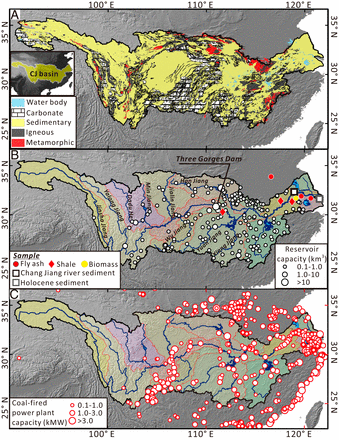

School Notes
Date posted: Aug 26, 2021

Coal combustion releases carbon dioxide but also leaves behind solid waste, or fly ash, which contains considerable amounts of carbon. The organic carbon sourced from fly ash resists chemical breakdown and might stay in the environments for a long time. In a new study coauthored by Prof. Xingchen (Tony) Wang, it was found that coal fly ash now make up between 37 and 72 percent of all particulate organic carbon carried by the Yangtze River in China, or around 200,000 to 400,000 tons of carbon per year. The study, which is the first of its kind, shows just how big an impact fossil fuel consumption has on Earth. Beyond pumping carbon dioxide into the atmosphere, coal burning dumps about as much particulate carbon into the Yangtze River as natural processes do. This article, entitled "Coal fly ash is a major carbon flux in the Chang Jiang (Yangtze River) basin", was published in Proceedings of the National Academy of Sciences of the United States of America. For more information, please visit Prof. Wang's website.